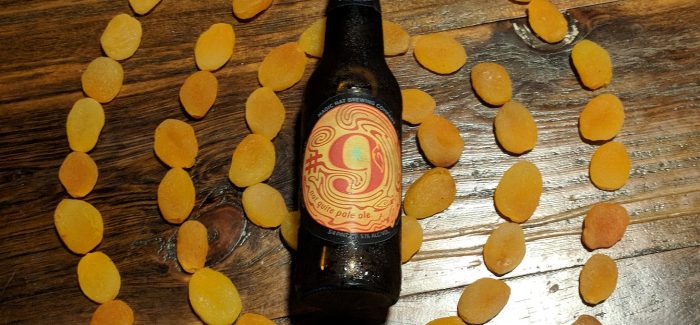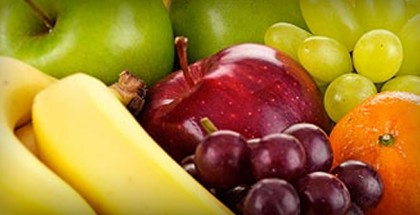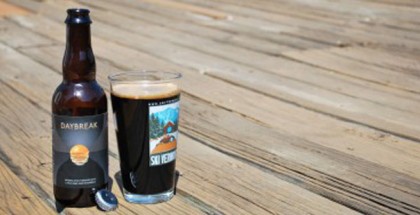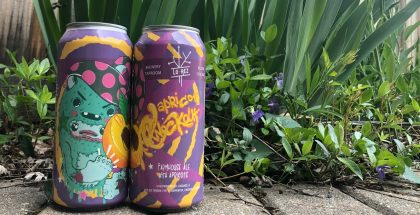The OGs of Craft Beer | Magic Hat Brewing Company – #9
In writing this, I fired up the PorchDrinking DeLorean and visited our original showcase of #9 from 2012. Even though it’s way before my time with Tristan and the gang, reading the article was a nostalgia trip that perfectly reflects the reason #9 deserves its place in this series. Coit Stevenson is so excited just to get #9 in Colorado he barely remembers to review it. #9 was for many drinkers their first dabble into fruit beers and pale ales. With the market today practically drowning in Blood Orange as multi-fruit sours are available in any mid-level liquor store, it’s nice to remember a time when a little bit of magic, and some apricot, brought so much wonder onto your palate.
(READ: PorchDrinking Explores the OGs of Craft Beer)
#9 pours with a big, crackling frothy head and smells like my hands did after taking that cover photo, which is to say like a pile of dried apricots with a hint of sugary oat-bread as well. Its coloring is the watery burnt sienna of photo-effects filters, though that may just be all the nostalgia talking. It’s a quick hit of a beer, the flavor not really making an impact in a tip of the tongue or any precursor taste. It goes down clear and smooth, with ripe apricot flavor and perhaps a swirl of other stone fruits in the mix. Looking for that raspberry note that Coit revels in discovering, I think I can find the traces of what he was speaking off in the aftertaste that curls on the tongue, though keeping with the same fruit family I think it’s a bit more dark-sweet cherry than raspberry. #9 doesn’t give you a lot of time to dwell in the flavor, as it lasts for only a moment after the liquid itself goes down and wasn’t made for times where people would be swilling it around in big goblets, small sips at a time trying to determine the 17 different aspects of flavor that hide within.
ABV: 5.1% | IBU: 20
Why it’s an OG
As the craft beer industry has grown, the more dismissive some fans have become to the original labeling them as “college kid gateway beers.” However, it’s through examination of these founding fathers of the craft movement that we actually are able to appreciate the evolution of a beer movement. Before most beer fans could tell the difference between their hops, #9 is where they first began to understand and translate the terms of wine into beer drinking. As a recent Forbes article on Magic Hat’s latest double IPA points out, now that some fans of craft brewing are treating Cicerone programs as their own Bridge to Total Freedom. Many of these companies that made it possible for would-be brewers to convince investors and banks to hand over dollars to turn dreams into reality are left by the wayside. Breweries in this situation can chose to either go nuts and accost people, pack it up and go home, or realize they’ve made good product before and double down in an attempt to do it again. Magic Hat chose the third option.
I was one of kids who first got into craft through stuff like #9. I studied abroad in Prague and remembered weird little place that on our last day served beer flavored with cherry and nettles. Magic Hat’s wider distribution net by the mid-aughts meant that it was affordable enough that even a broke college student could splurge an extra dollar at the bar to get it. You didn’t have to go searching for #9, it found you. With a fun label it coaxed you into a try, and offered a glimpse of the fact that beer could have things like notes, aftertaste and subtleties that didn’t exist in the full on mass market lagers and pilsners.
At its essence, #9 is like the “Genius of Love” of the craft beer world. The strange fruity beer which purposefully shrouds its formula and even its name in mystery is fun, approachable and something that when it came out was successful in part because it was a weird combination of ideas that no one else was doing. It introduced people, yes, including “college kids,” that there were more flavors to be had in a beer than “lite” and “heavy”. Its influence is boundless: showing a real desire in the market for fruit beers outside of Lindeman’s devotees as it continued and provided something for other breweries to point to when trying to convince others their strange fruit-inclusive ideas could actually be financial successes. Like the Tom Tom Club’s hit, it may not seem as innovative now as it did then, but you can see its influence in a huge array of beers that exist today.
About the OGs of Craft Beer Series
We at Porchdrinking.com thoroughly enjoy covering craft beer trends and showcasing the newest and beers. But, before terms like Brut, Milkshake, New England and even BBA entered the brewing-industry lexicon, beer fans were thrilled to taste Ambers, Pale Ales and some mysterious beer that may or may not have arrived from India. So, for one month, we are going to take time to remember some of those OGs of Craft Beer — the brews that made it all possible. While we can’t cover all the OGs of Craft Beer, we want to take this time in August to pay homage to several of them. If your favorite “classic” isn’t on the list; don’t fret. Let us know what you loved back in the day (or still do), and bring attention in the comments section below or via our social media channels.









Submit a Comment